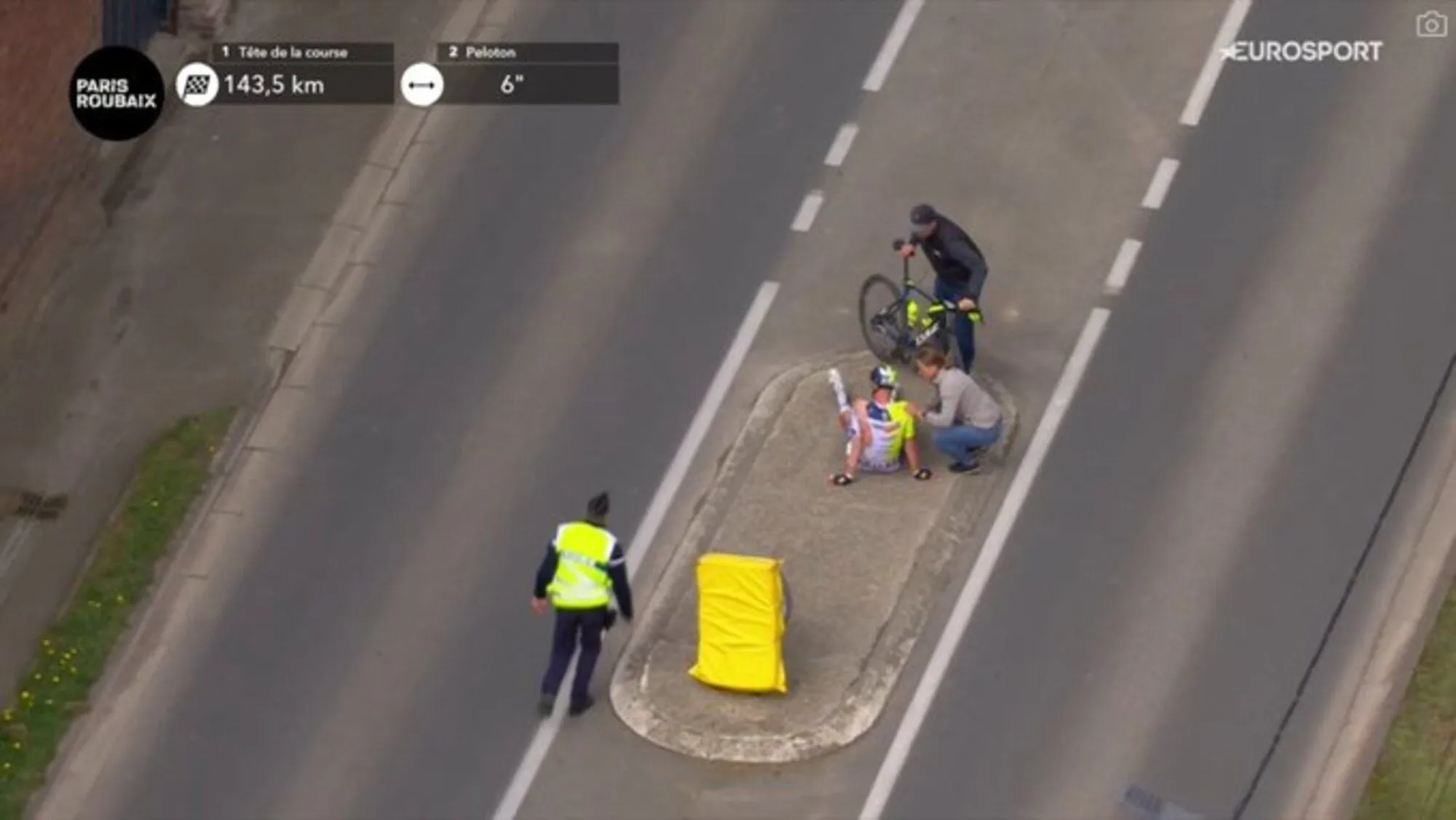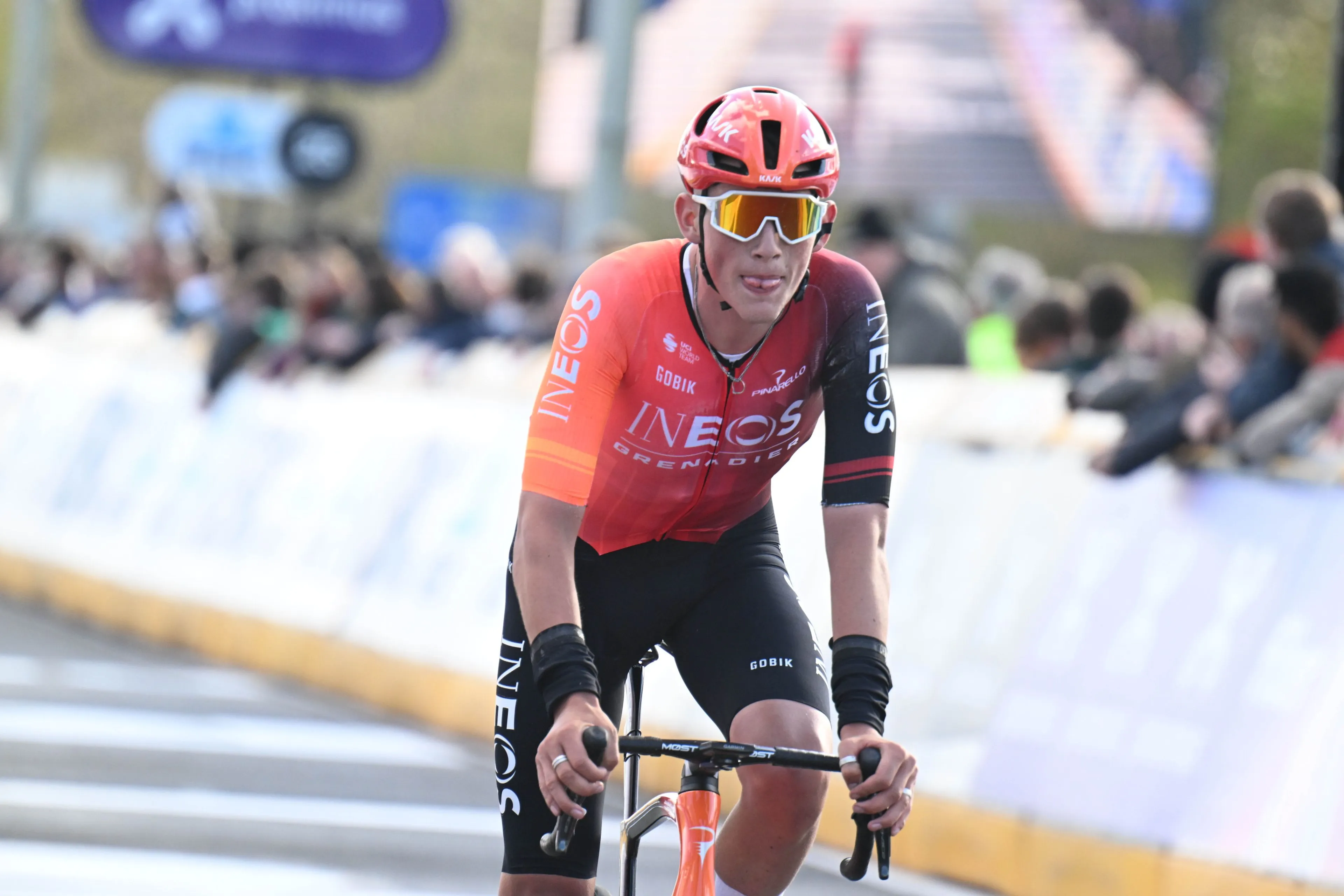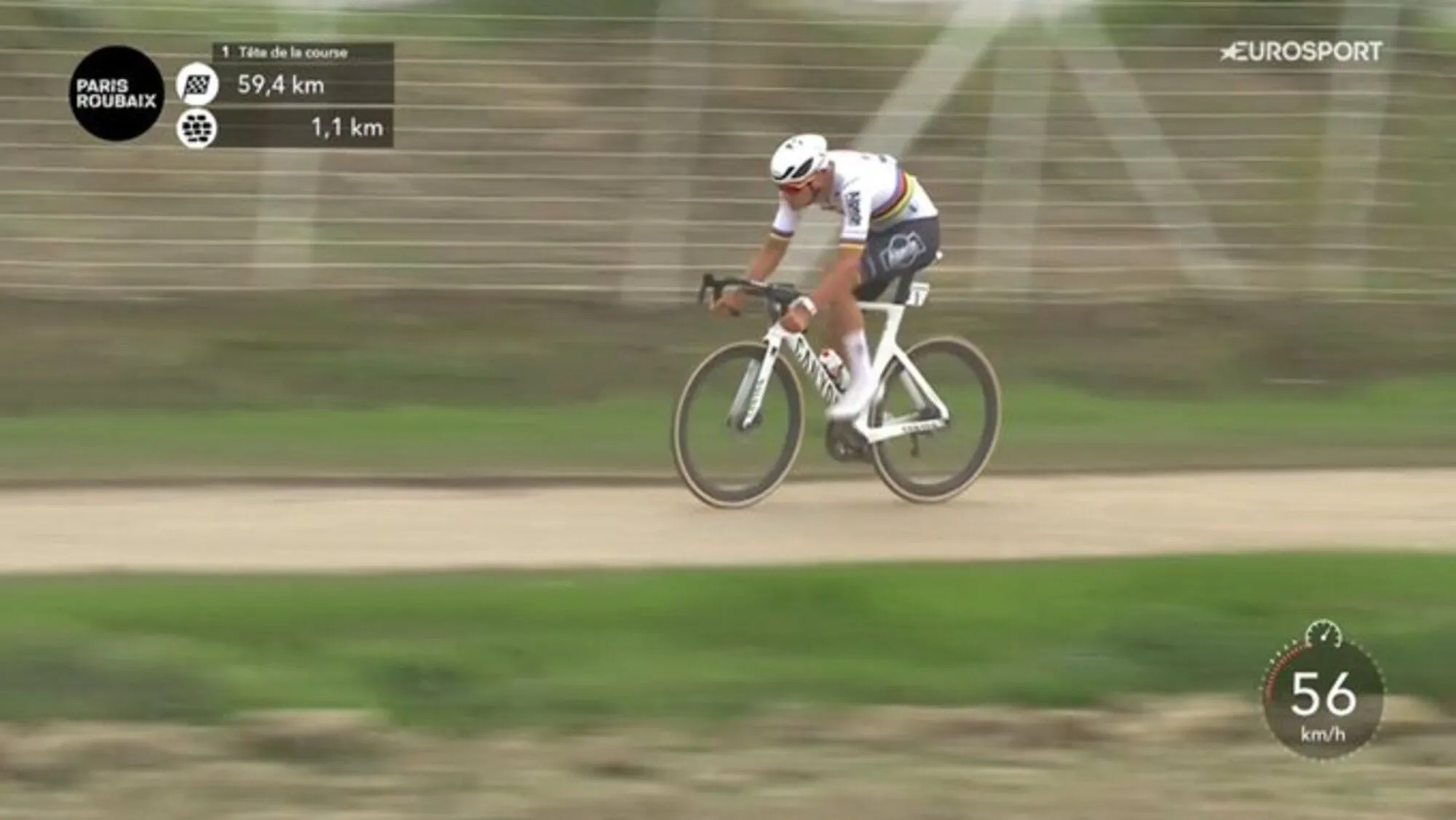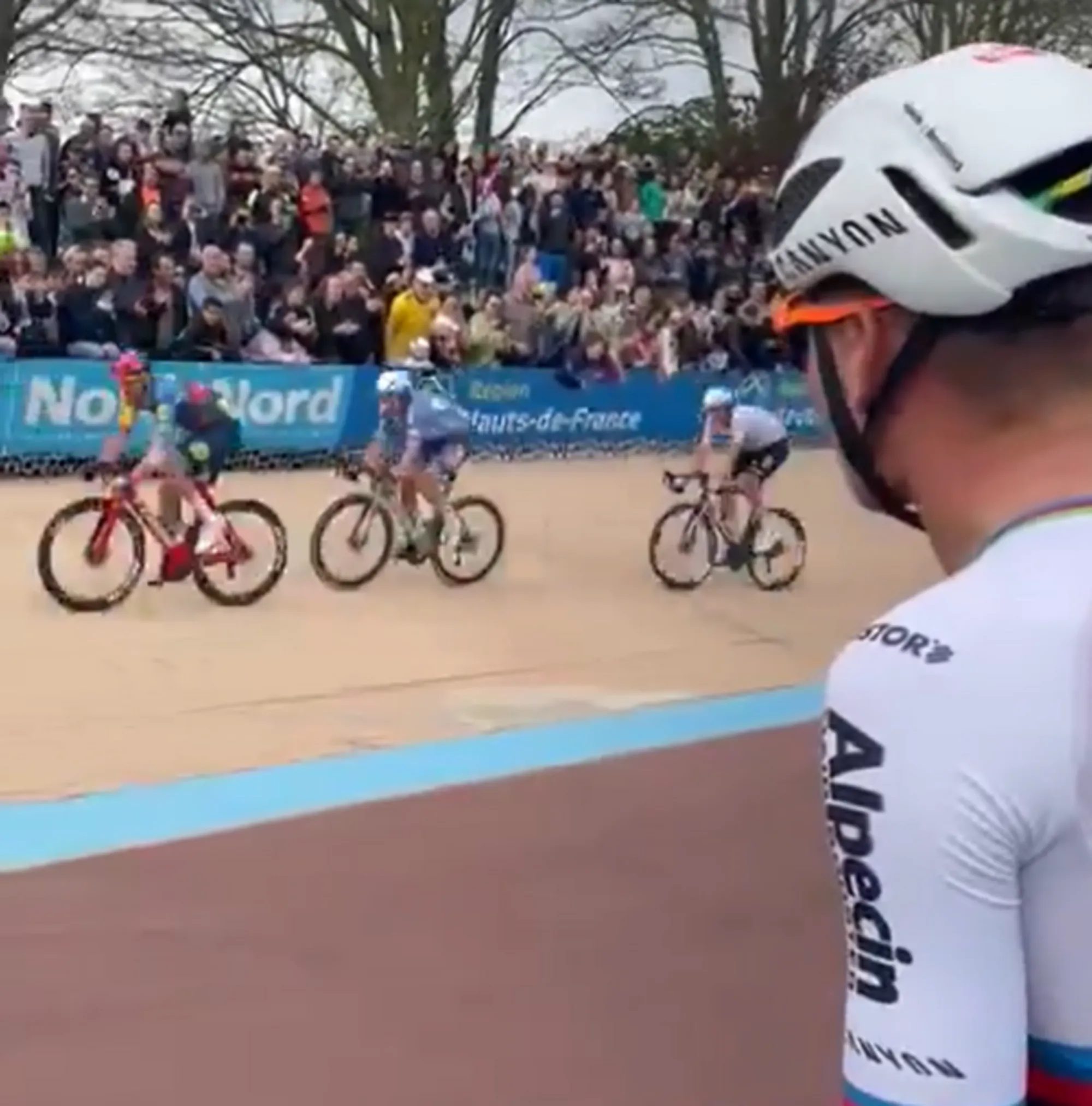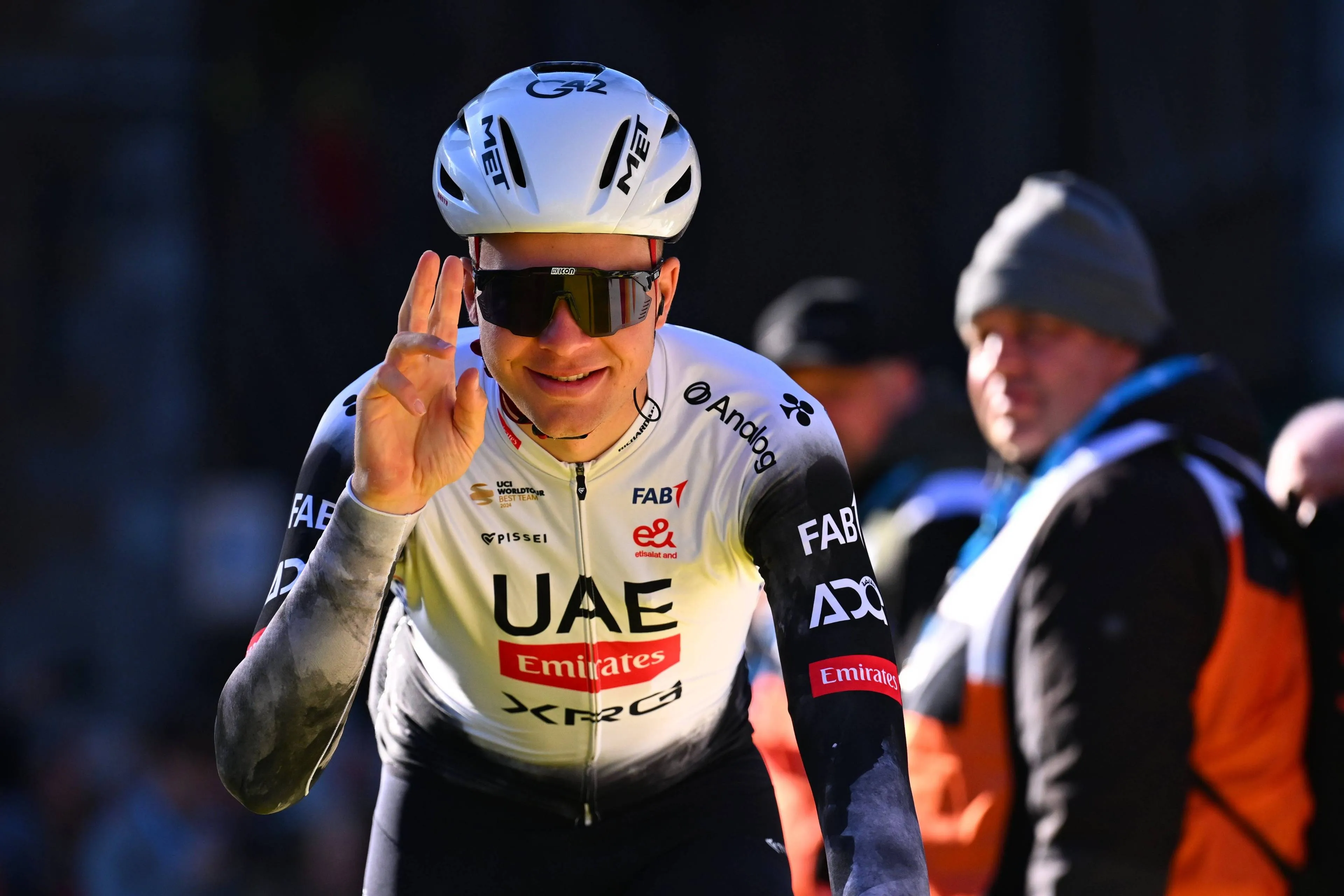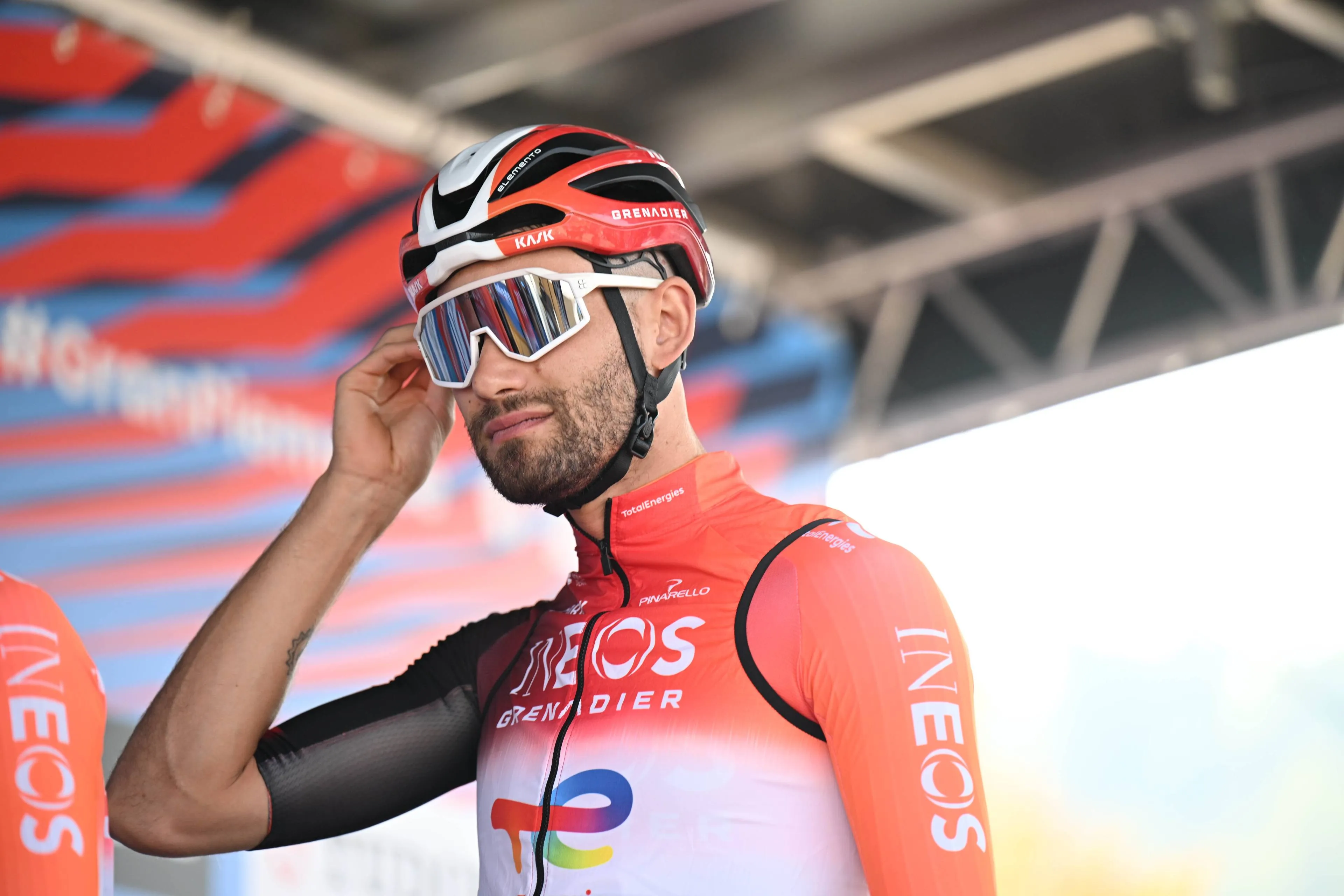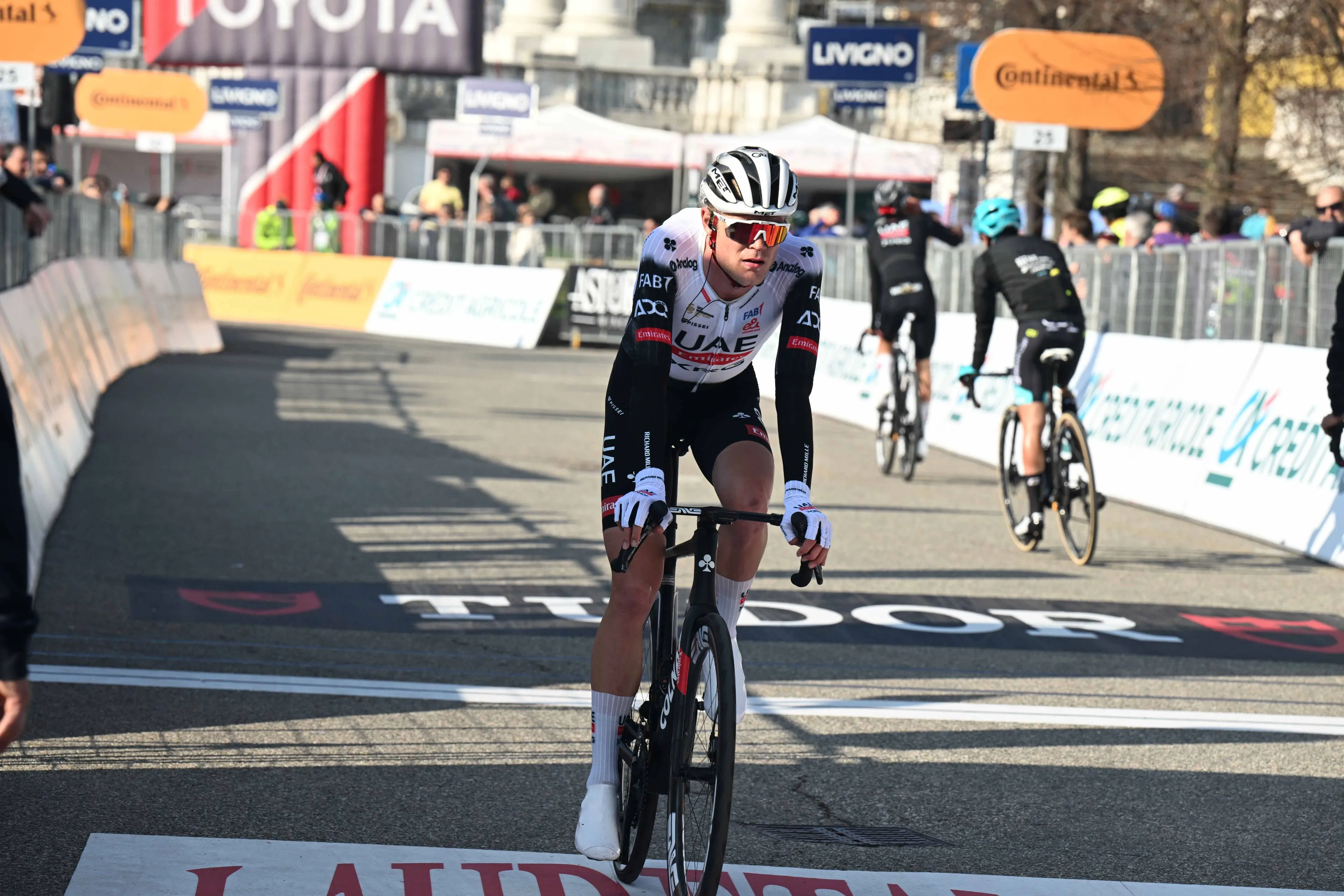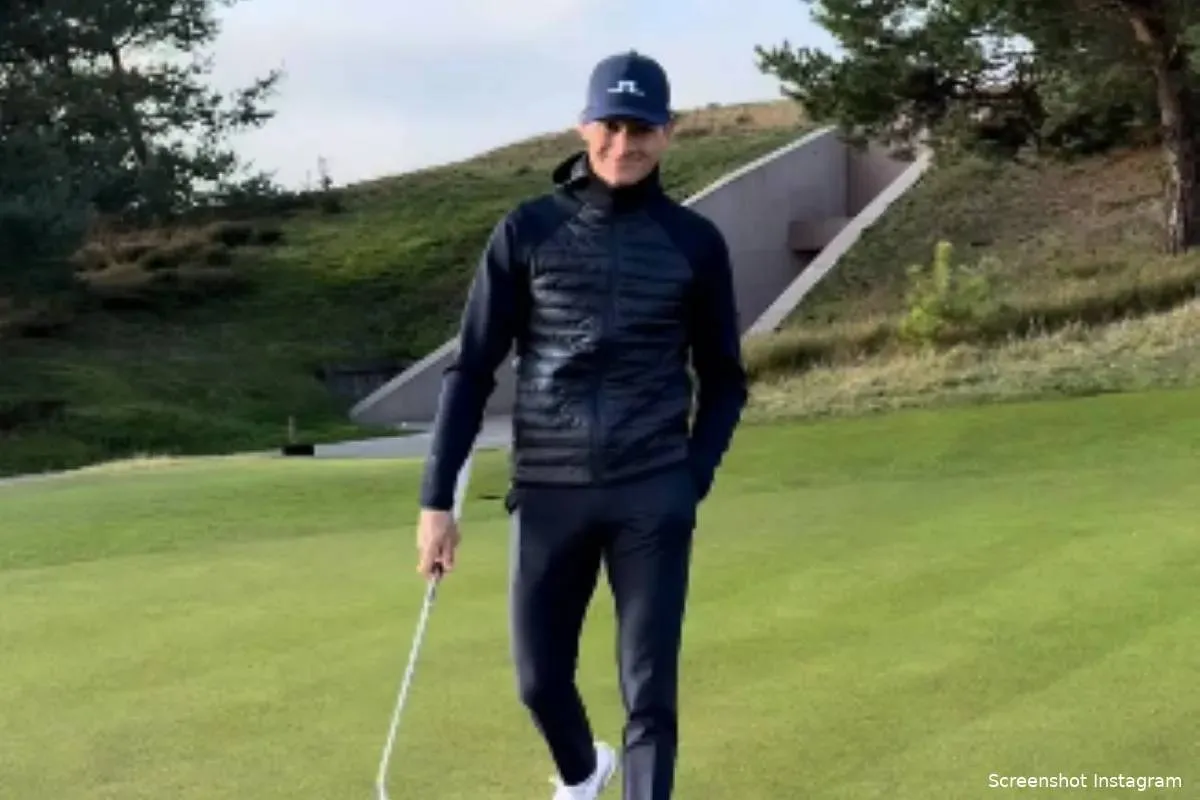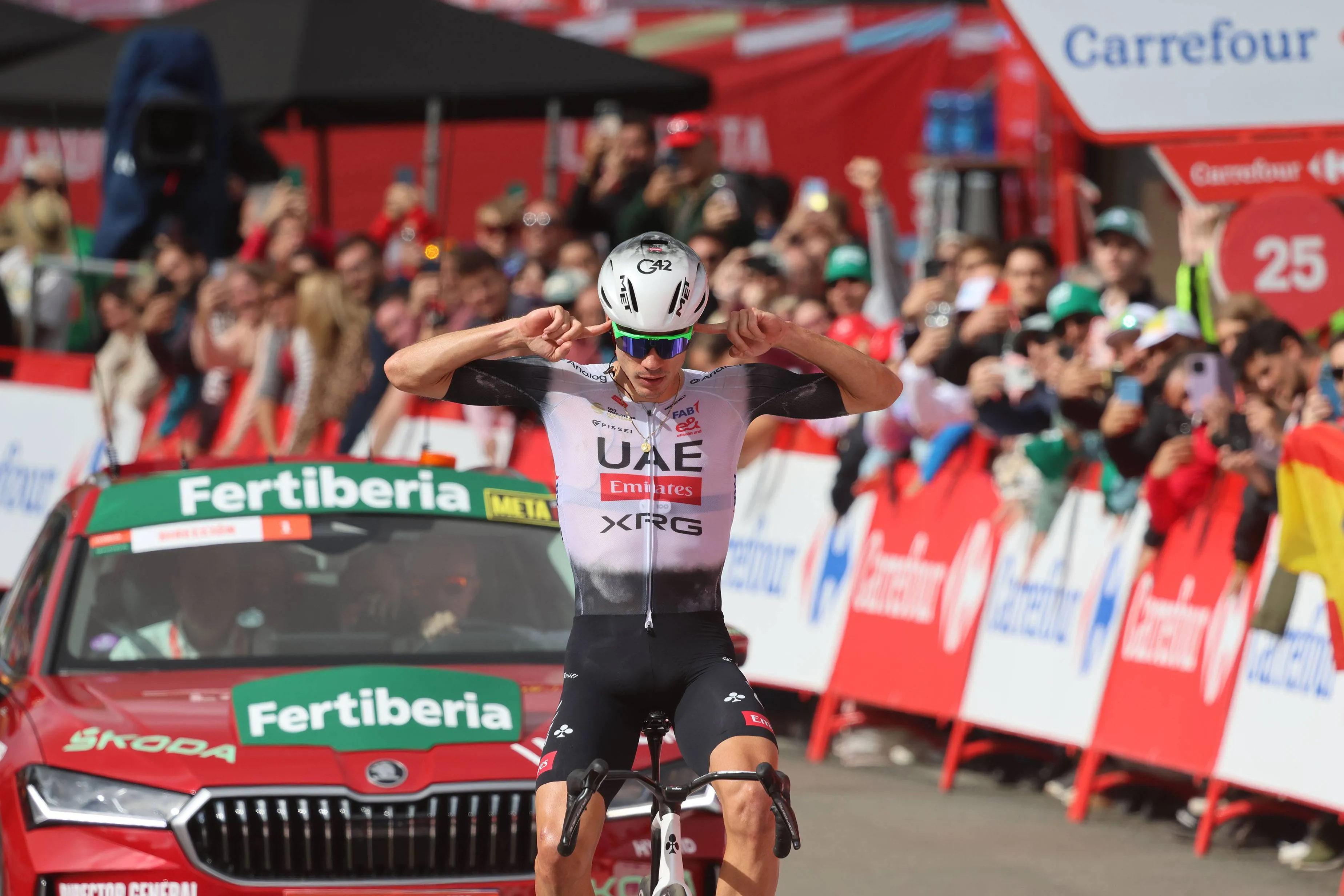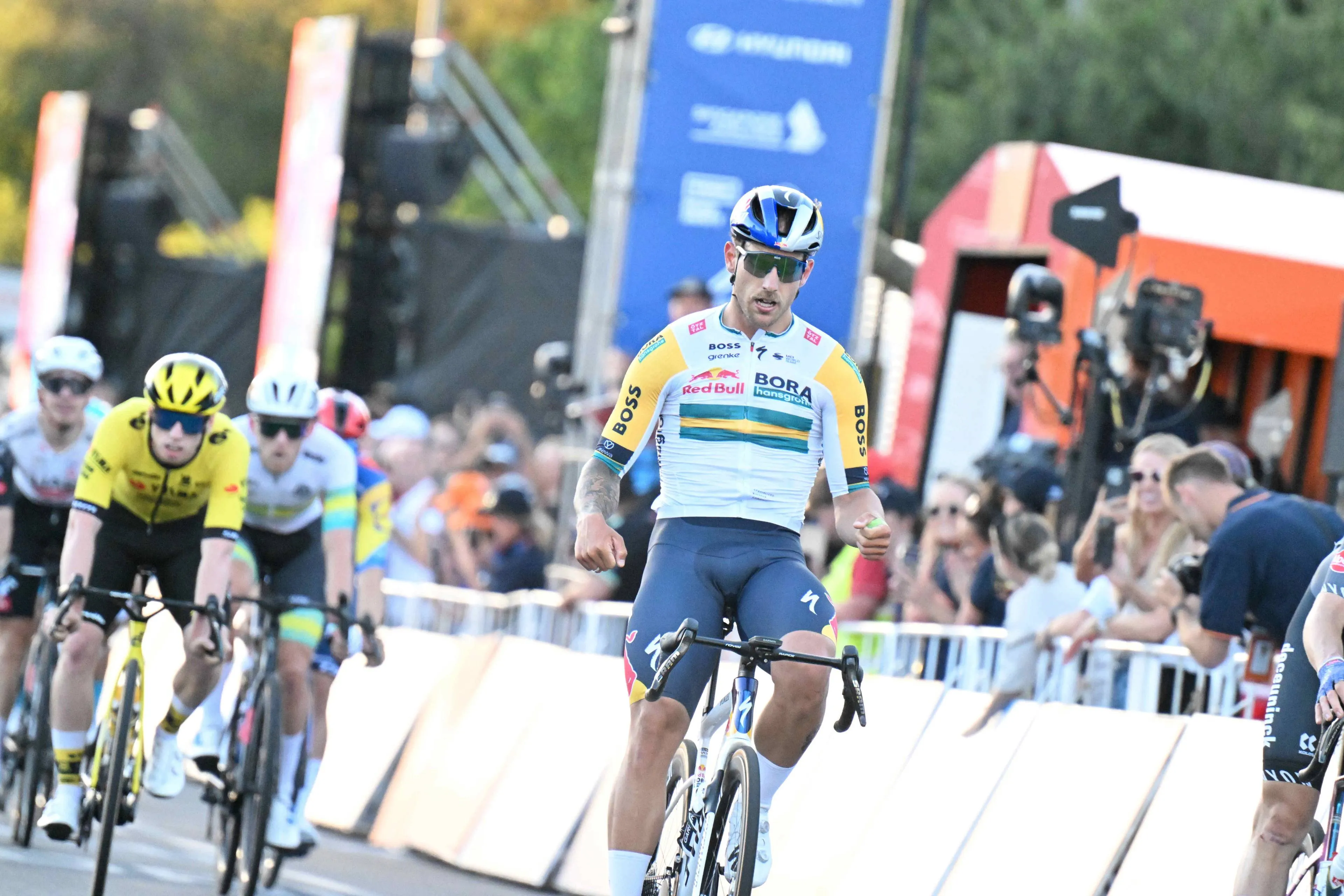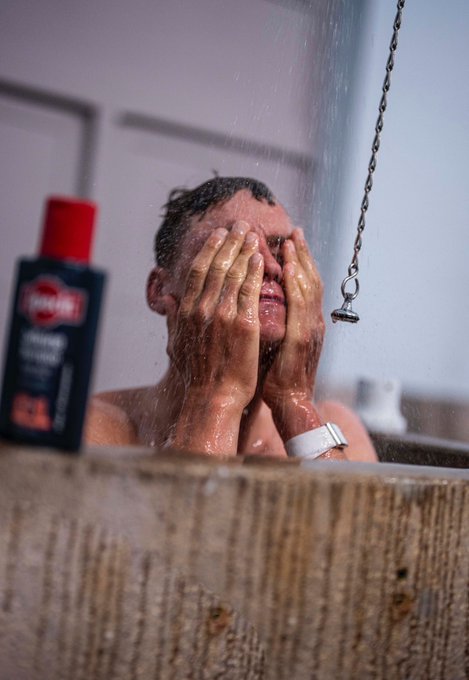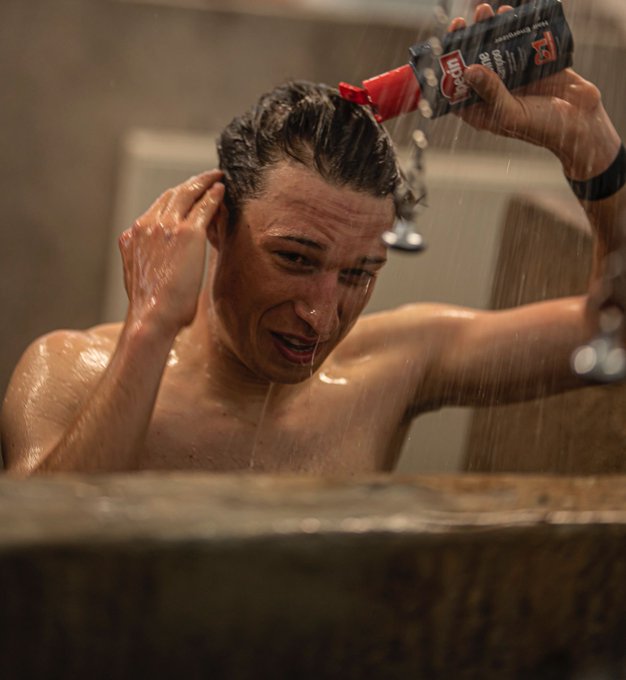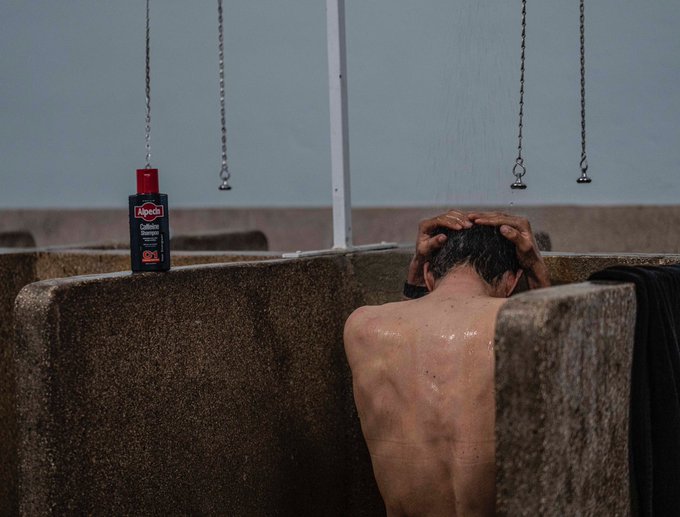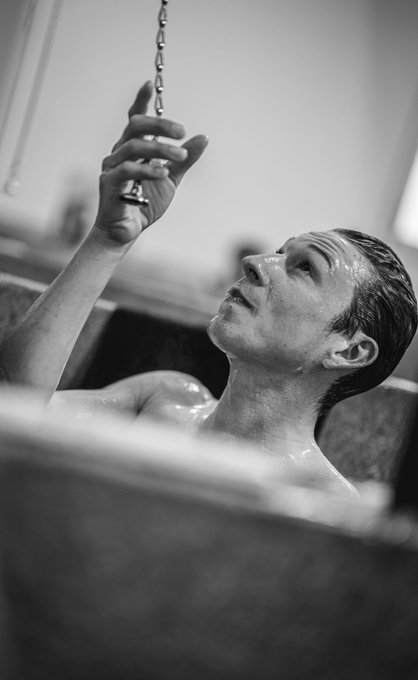WheelWatch #1: Paris-Roubaix 2024 | The 3 moments which led to Mathieu van der Poel's victory
CyclingTuesday, 09 April 2024 at 11:06
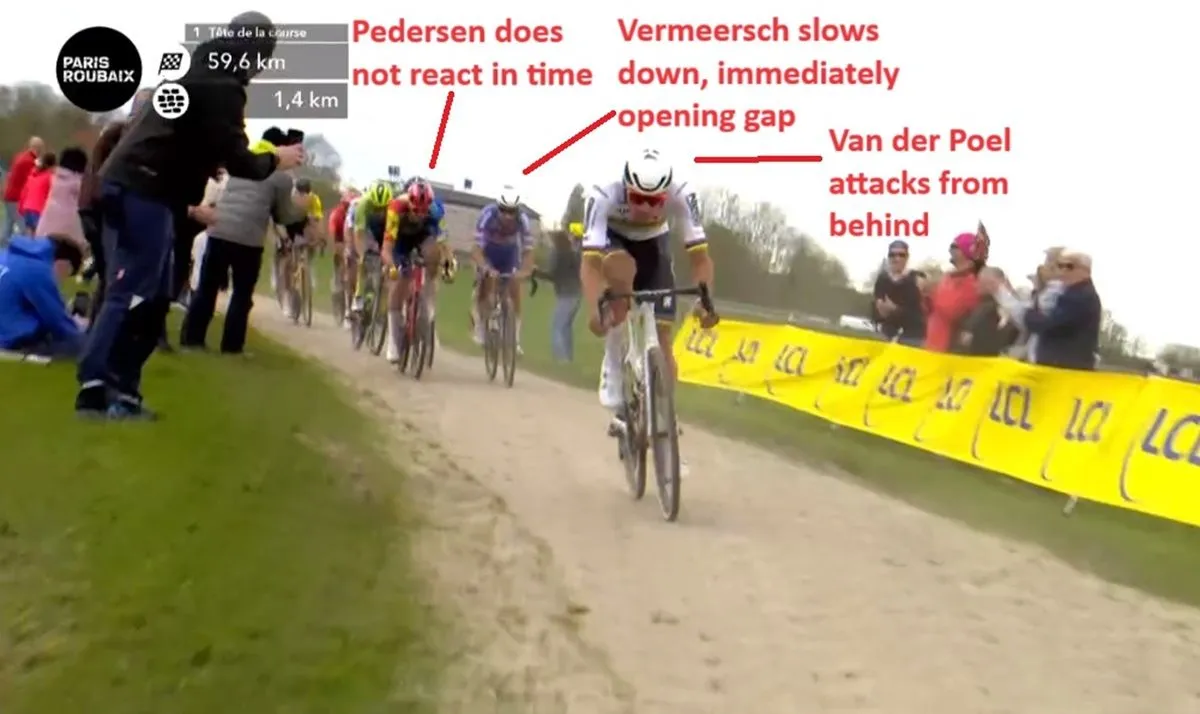
Paris-Roubaix 2024 was a race dominated by Alpecin-Deceuninck. Mathieu van der Poel and Jasper Philipsen rode to first and second for a second consecutive edition. We take a look at how the Belgian team prepared their winning attack and won with ease.
#1: Breakaway is formed with Kasper Asgreen, Rasmus Tiller and other dangerous riders
The breakaway of the day at Paris-Roubaix is always a hotly contested battle. Perhaps the one that is fought for the most throughout the entire year actually. This year saw 22 kilometers of racing before the decisive group went up the road, not too much actually. Liam Slock, Kasper Asgreen, Kamil Malecki, Rasmus Tiller, Gleb Syritsa and Per Strand Hagenes attacked with 237 successfully. Many tried to attack afterwards, keeping the speeds very high, creating more fatigue in the peloton.
With a tailwind - which led to the speed record in Roubaix to be beaten once again - and strong riders up the road, the peloton could never let the gap grow too much. Pressure was constant. Lidl-Trek and Alpecin-Deceuninck kept the pace high behind, as Dries de Bondt and Dusan Rajovic later jumped across the gap - at a big cost. The scene was set.
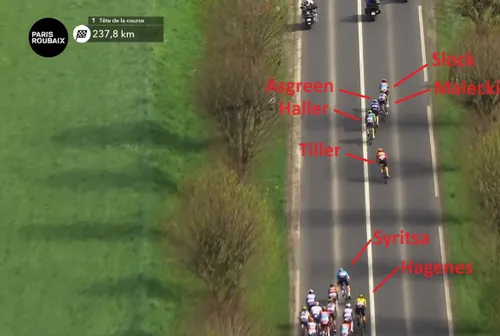
237Km to go: 7 of the 9 breakaway riders go up the road
#2: Jonathan Milan crashes out of the race. Joshua Tarling, Laurenz Rex and Nils Politt involved
Alpecin had a key card this spring which was that of avoiding crashes. All three of their leaders for the cobbles arrived in great form. Gianni Vermeersch did crash at Dwars door Vlaanderen but you wouldn't be able to tell that from his rides in Flanders and Roubaix; whilst Van der Poel and Philipsen were clean and in perfect state for the monuments. That was not the case with many riders. The likes of Wout van Aert, Jan Tratnik, Dylan van Baarle and Jasper Stuyven are just some of the riders who didn't even arrive at the start line.
Still during the race, even more possible contenders for a top result crashes. With 221 kilometers to go the biggest - and luckily only meaningful - crash happened in the peloton, but this took out Jonathan Milan. Milan was Lidl-Trek's wildcard, having thrived at Gent - Wevelgem, the Italian powerhouse could be very dangerous over the flat cobbles of Roubaix. He was no longer, taking away the American team's power to use numbers, as had happened with Visma. Now both of Alpecin's rivals were severely decimated.
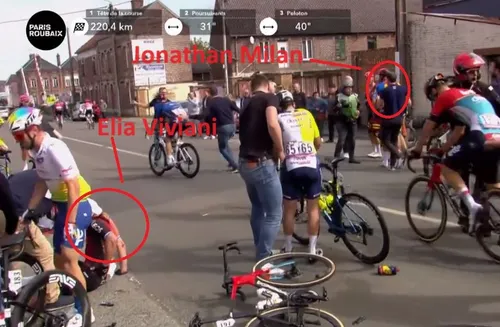
221Km to go: Mass crash sees several favourites hit the deck
Read also
#3: Alpecin-Deceuninck takes hold of the race
Viesly à Quiévy, the second sector of the race, was the clear view of how this race was to be. Alpecin-Deceuninck swarmed the head of the peloton. This was not by chance. They were allowed to do so. This is key moment number 1. Fight for positioning was present, but when the race entered the cobbles other teams dropped off the head of the peloton and led Alpecin do the work. Whilst creating fatigue, despite seeing no attacks the peloton was to split under the high pace. This allowed the Belgian team to be heavily represented as the peloton split in some of the sectors.
This was a key point in the race as other teams lost significant amounts of manpower, but also it allowed Alpecin to be in the front with even more comfort as rival teams did not have the same capacity to fight for positioning even entering the sectors. So far, everything in favour of the team to beat. There were even briefly echelons, but they were not decisive in the outcome of the race.
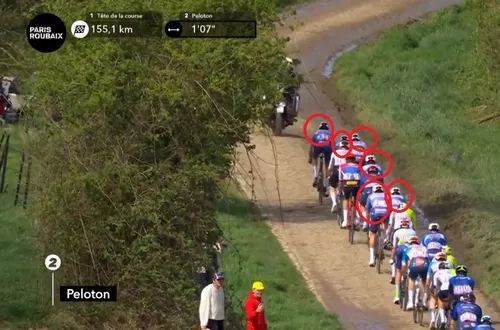
Alpecin-Deceuninck ride the second sector of the race with 6 riders in the head of the peloton

154Km to go: Peloton stretched out on the second sector of the race
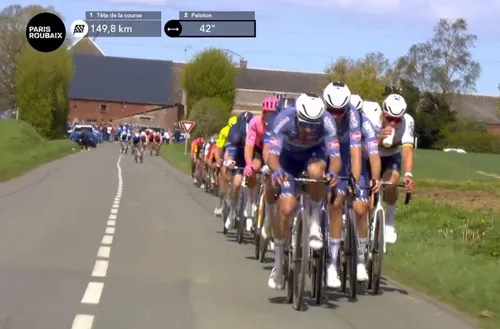
150Km to go: Echelons in the peloton as Alpecin swarms the front
#4: The field loses depth. Less riders to attack Alpecin
The peloton wasn't too damaged still at this point. But a few more riders were to lose their chance of fighting for Roubaix. Laurenz Rex, winner of Le Samyn and Top10 last year hit road furniture in a moment of distraction and abandoned after his second crash. Only a few minutes later, Joshua Tarling (who was riding a 62-tooth chainring) was disqualified due to a lengthy 'sticky bottle'. He was angry, understandably, I blame the team DS and not the young Briton himself who was under pressure and trying to return to the peloton.
Perhaps they would not rival van der Poel directly - although you never know, it's Roubaix after all - but it further cemented the lack of teams wanting to fight for positioning, the lack of outsiders who can attack and put Alpecin under pressure. One by one throughout the spring and the race they were either ill, injured or even disqualified. But all of Alpecin's riders remained intact whilst behind chaos was taking place. This lack of early attacks allowed them to be in control of everything. All possible attacks were immediately covered, and so the team never actually had to chase their rivals, but instead follow their wheels later on.
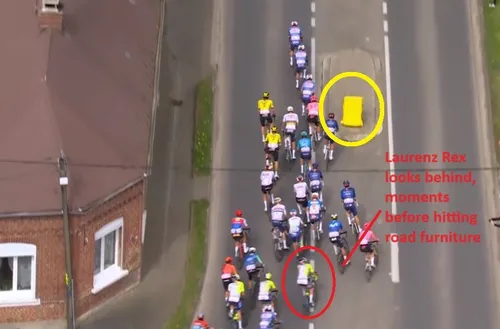
131Km to go: Laurenz Rex crashes out of Paris-Roubaix
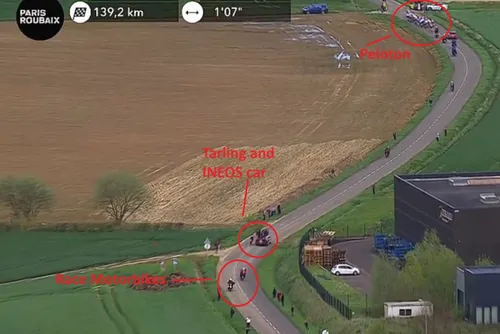
129Km to go: Joshua Tarling disqualified after lengthy 'sticky bottle'
Read also
#5: Mathieu van der Poel attacks on the Arenberg; first selection made
The Trouée d'Arenberg came. As expected, the chicane had no influence in the race. Mads Pedersen hit the front but Mathieu van der Poel then attacked. He got a gap, but with over 90 kilometers to go it was not feasible to go alone to the finish - although looking back, the outcome could've been the same. Van der Poel waited for teammate Jasper Philipsen, Mads Pedersen and Visma newcomer Mick van Dijke. For Alpecin this is perfect, and surely all four riders would go all-out to make it happen. But Philipsen punctured shortly after.
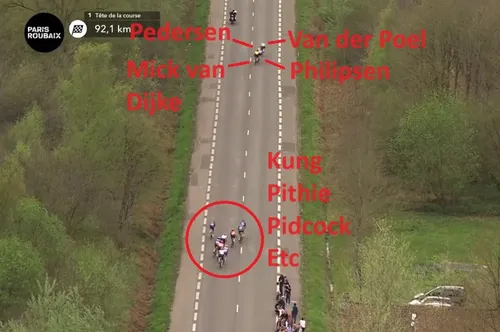
94Km to go: Head of the race right after Trouée d'Arenberg
This meant that now van der Poel stopped pacing, and the group was caught by the chasers. But this included Gianni Vermeersch who quickly reacted to any move. This demotivated others, slowed the pace which allowed Philipsen to regain position and Alpecin to regain superiority. They were back in full control.
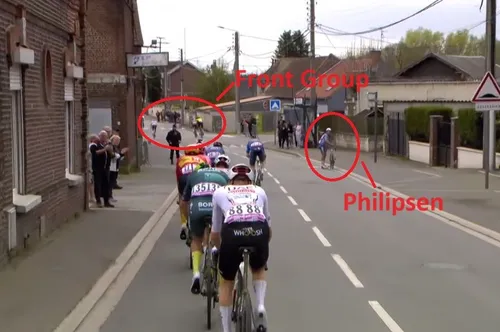
92Km to go: Jasper Philipsen stops after a puncture
#6: Van der Poel actually put under pressure, but Lidl-Trek saves him
Mads Pedersen punctures just a few minutes after. Teammate Mathias Vacek waits for him and starts pacing a second group, but immediately Alpecin try to take advantage of the situation.
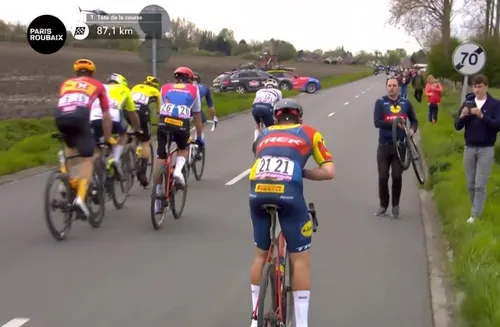
88Km to go: Mads Pedersen punctures
Gianni Vermeersch moved off the front, Nils Politt and Stefan Küng followed. But Van der Poel was under pressure; with 87 kilometers to go he attacked from behind to try and bridge across - unsuccessfully. He jumped to the team radio, and rode a few times in the front of the group. He was not happy with the situation as although Vermeersch is a good rider, so are his two new group partners. The team (van der Poel himself most likely) tells him not to pace with the other two, recognizing the danger. Ultimately this was key moment number 2 because on one side the duo did not go all-out as they had a passenger on their wheel.
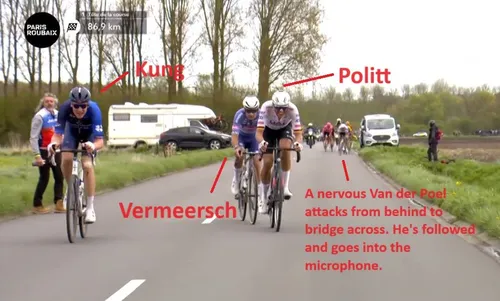
87Km to go: Attack Gianni Vermeersch, Nils Politt and Stefan Küng
On the other side, they played a bluff behind even though there was tension. But that bluff payed off as Lidl-Trek returned to the peloton with Edward Theuns and Mathias Vacek who burned themselves to close the gap down as much as possible, and then Mads Pedersen himself hit the front of the group. Alpecin was following wheels in both groups whilst their main rivals were in the wind. Looking back, it was hard to see any different outcome after these images - specially taking into consideration that Pedersen and the two rivals in front would end up being themselves the rivals who performed the best in the end.
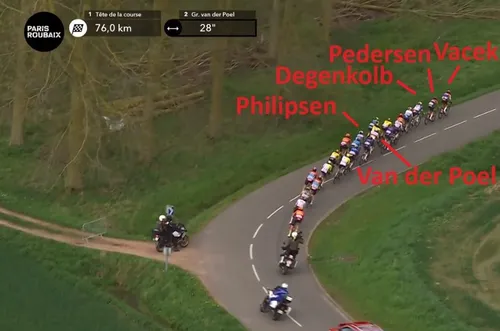
As if things couldn't get better for Alpecin, dark horse Mick van Dijke crashed with 71 kilometers to go. He did get back on the bike shortly after, but he didn't look the same again. He followed the best on the Arenberg, but another one bites the dust... Literally.
The work of Lidl-Trek effectively brought things back together. And then it was van der Poel's turn to put on the steam.
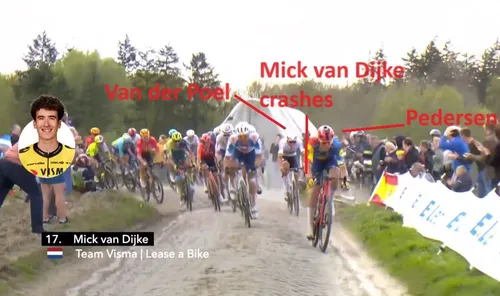
71Km to go: Mick van Dijke crashes as Mads Pedersen leads large peloton
#7: One attack is enough
Key moment number 3. At Orchies, sector number 13, with 59 kilometers to go, Mathieu van der Poel attacked to victory. In in the Flandrien classics against Mathieu van der Poel he's learnt that the key part of winning is getting the winning gap; regardless if it's in a climb or flat road. Modern cycling is seeing those seemless attacks on flat roads become more decisive. Here my thinking is not too different; if van der Poel attacked in the toughest sectors all eyes would already be on him. Maybe it would still be successful, but this tactic works best.
When getting the gap is the key point, attack where they won't expect. Coming from behind a few rivals, he attacked at almost 60Km/h on this cobbled sector, a powerful acceleration which immediately created a gap as Vermeersch slowed down as soon as his teammate overtook him. If someone had followed him right away it would've been possible to bridge, but by the time van der Poel overtook Mads Pedersen the speed difference was enormous.
There were legs in the group, the gap remained at around 15-20 seconds for a few minutes, but soon it became evident that Alpecin's numbers game had been played to perfection. The biggest advantage of having numbers is not actually being able to attack or counter-attack more anymore; it's having teammates counter-attacking all the moves that can chase you down. And in a flat race where the average was superior to 47Km/h, no riders will want to take passengers at that speed.

59Km to go: Mathieu van der Poel attacks
Read also
#8: Van der Poel's back is covered
That was how Alpecin sealed the race. Working efficiently behind, a small group could still get back to him perhaps. But that's not possible when two riders are actively sitting in the wheels. This leads to attacks as rivals want a group without Alpecin. They can't, as both Jasper Philipsen and Gianni Vermeersch reacted to anything that moved. After a few minutes van der Poel was still not caught and motivation drops. Then the gap begins to skyrocket.
In this moment with 49 kilometers to go it is possible to see the attacks behind, Nils Politt making a move followed by Gianni Vermeersch, whilst Mads Pedersen's chasing is in itself being covered by the other Alpecin rider. This suffocating tactic is more psychological than physical, and it works.
The story virtually ended here. All van der Poel had to do was get through the final hour of racing without crashing or puncturing. At his normal level, he would at least keep the gap. If he was caught Jasper Philipsen would attack; but most likely win in a sprint even if not. But not even that shred of doubt was given by Alpecin, with van der Poel winning with exactly three minutes of gap.
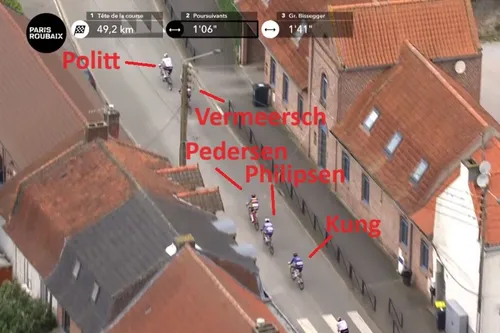
49Km to go: Mathieu van der Poel wins 1 minute in 10 kilometers as Philipsen and Vermeersch cover all attacks
Read also
claps 1visitors 1
Just in
Popular news
Latest comments
- great news ...Davide15-12-2025
- looks goodDavide15-12-2025
- It's so easy to say all of those things about someone in retrospect.
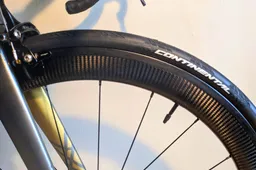 santiagobenites15-12-2025
santiagobenites15-12-2025 - You never want to get Mads…mad.Oldguyonavelo15-12-2025
- Hope this works out for Gee. Seems like Lidl Trek could be a little muddled this yearmobk15-12-2025
- "Questions will arise over whether Ayuso rides as Lidl-Trek’s outright leader or works in support of Skjelmose" Why is there a question? We already know he will not ride in supportmobk15-12-2025
- Being Pogi's mechanic would be absolutely terrifying. he wins like 90% of the races he enters and if there is a loss due to mechanical issues especially in the GTs/Monuments , you are going to get the bootabstractengineer15-12-2025
- Some of these cyclists are really stupid. So a more important rider is hired, there are too many leaders, he talk betrayal, He talks adjustments, He is not selected for any GTs. and he still signs for them🤦🤦🤦abstractengineer15-12-2025
- "He’d sit in the kitchen drinking red wine with the chef for hours after dinner" strange but how is it related to dopingabstractengineer15-12-2025
- 🤣. he cannot surpass Merckx ever. Its not called ambition, its stupidityabstractengineer15-12-2025
Loading
Probably the biggest desire after a brutal Hell of The North: a refreshing 🚿 in the iconic showers of the @parisroubaix Velodrome with #Alpecin Caffeine Shampoo! Feels even greater after finishing 1, 2 and 6! 💆♂️ #ParisRoubaix #Alpecin #HairBooster 📷 Stefan Rachow
4 Comments
